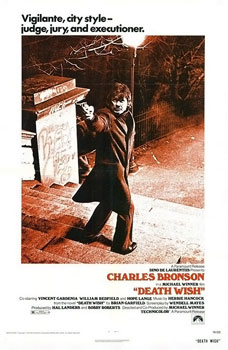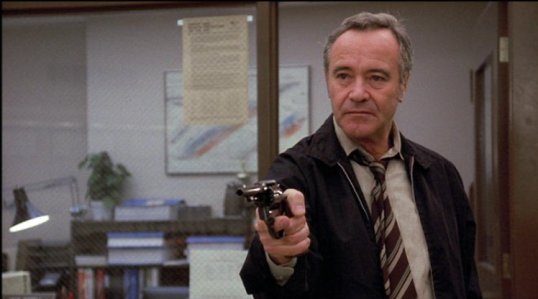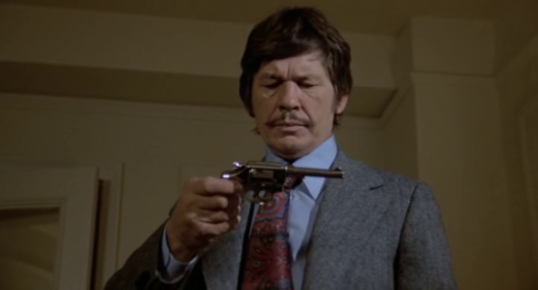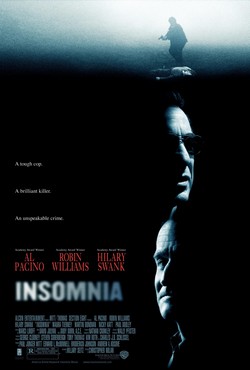 To quote “Dirty” Harry Callahan, “I’m all broken up about his rights.”
To quote “Dirty” Harry Callahan, “I’m all broken up about his rights.”
In 1972, a novel by Brian Garfield was published. The novel was about a meek New York City accountant named Paul Benjamin. After Paul’s wife is murdered and his daughter is raped, Paul suffers a nervous breakdown. A self-described bleeding heart liberal, Paul starts to stalk the streets at night while carrying a gun. He is hunting muggers. At first, he just kills the muggers who approach him but soon, he starts to deliberately set traps. Sinking into insanity, Paul becomes just as dangerous as the men he is hunting. Garfield later said that the book was inspired by two real-life incidents, one in which his wife’s purse was stolen and another in which his car was vandalized. Garfield said that his initial response was one of primitive anger. He wondered what would happen if a man had these rageful thoughts and could not escape them.
The title of that novel was Death Wish. Though it was never a best seller, it received respectful reviews and Garfield subsequently sold the film rights. At first, Sidney Lumet was attached to direct and, keeping with Garfield’s portrayal of Paul Benjamin, Jack Lemmon was cast as the unlikely vigilante.

Lumet, ultimately, left the project so that he could concentrate on another film about crime in New York City, Serpico. When Lumet left, Jack Lemmon also dropped out of the film. Lumet was replaced by Michael Winner, a director who may not have been as thoughtful as Lumet but who had a solid box office record and a reputation for making tough and gritty action films.
Winner immediately realized that audiences would not be interested in seeing an anti-vigilante film. Instead of casting an actor with an intellectual image, like Jack Lemmon, Winner instead offered the lead role (now named Paul Kersey and no longer an accountant but an architect) to Charles Bronson. When Winner told Bronson that the script was about a man who shot muggers, Bronson replied, “I’d like to do that.”
“The script?” Winner asked.
“No, shoot muggers.”

At the time that he was cast, Charles Bronson was 52 years old. He was the biggest star in the world, except for in America where he was still viewed as being a B-talent at best. Bronson was known for playing tough, violent men who were not afraid to use violence to accomplish their goals. (Ironically, in real life, Bronson was as much of an ardent liberal as Paul Kersey was meant to be at the beginning of the movie.) Among those complaining that Charles Bronson was all wrong for Paul Kersey was Brian Garfield. However, Bronson accepted the role and the huge box office success of Death Wish finally made him a star in America.
To an extent, Brian Garfield was right. Charles Bronson was a better actor than he is often given credit for but, in the early scenes of Death Wish, he does seem miscast. When Paul is first seen frolicking with his wife (Hope Lange) in Hawaii, Bronson seems stiff and awkward. In New York City, when Paul tells his right-wing colleague (William Redfield) that “my heart does bleed for the less fortunate,” it doesn’t sound natural. But once Paul finds out that his wife has been murdered and his daughter, Carol (Kathleen Tolan), has been raped, Paul gets mad and Bronson finally seems comfortable in the role.
In both the book and the original screenplay, both the murder and the rape happened off-screen. Never a subtle director, Winner instead opted to show them in a brutal and ugly scene designed to get the audience as eager to shoot muggers as Bronson was. Today, the power of the scene is diluted by the presence of Jeff Goldblum, making his screen debut as a very unlikely street thug. Everyone has to start somewhere and Goldblum got his start kicking Hope Lange while wearing a hat that made him look like he belonged in an Archie comic.

With his wife dead and his daughter traumatized, Paul discovers that no one can help him get justice. The police have no leads. His son-in-law (Steven Keats) is a weak and emotional mess. (As an actor, some of Bronson’s best moments are when Paul makes no effort to hide how much he loathes his son-in-law.) When a mugger approaches Paul shortly after his wife’s funeral, Paul shocks himself by punching the mugger in the face.
When Paul is sent down to Arizona on business, he meets Ames Jainchill (Stuart Margolin), a land developer who calls New York a “toilet” and who takes Paul to see a wild west show. Later at a gun club, Paul explains that he was a conscientious objects during the Korean War but he knows how to shoot. His father was a hunter and Paul grew up around guns. When Paul returns to New York, Ames gives him a present, a revolver. Paul is soon using that revolver to bring old west justice to the streets of New York City.
As muggers start to show up dead, the NYPD is outraged that a vigilante is stalking the street. Detective Frank Ochoa (Vincent Gardenia) is assigned to bring the vigilante in. But the citizens of New York love the vigilante. Witnesses refuse to give an accurate description of Paul. When Paul is wounded, a young patrolman (Christopher Guest, making almost as unlikely a film debut as Jeff Goldblum) conspires to keep Paul’s revolver from being turned over as evidence.

The critics hated Death Wish, with many of them calling it an “immoral” film. Brian Garfield was so disgusted by how Winner changed his story that he wrote a follow-up novel in which Paul is confronted by an even more dangerous vigilante who claims to have been inspired by him. Audiences, however, loved it. Death Wish was one of the top films at the box office and it spawned a whole host of other vigilante films.
Death Wish is a crude movie, without any hint of subtlety and nuance. It is also brutally effective, as anyone who has ever felt as if they were the victim of a crime can attest. In a complicated and often unfair world, Kersey’s approach may not be realistic or ideal but it is emotionally cathartic. Watching Death Wish, it is easy to see why critics hated it and why audiences loved it.
It is also to see why the movie made Bronson a star. Miscast in the role or not, Bronson exudes a quiet authority and determination that suggests that if anyone could single-handedly clean-up New York City, it’s him. An underrated actor, Bronson’s best moment comes after he punches his first mugger and he triumphantly reenters his apartment. After he commits his first killing, Bronson gets another good scene where he is so keyed up that he collapses to the floor and then staggers into the bathroom and throws up. Garfield may have complained that the Death Wish made his madman into a hero but Bronson’s best moments are the ones the suggest Paul has gone mad. The real difference between the book and the movie is that the movie portrays madness as a necessary survival skill.
This Friday, a new version of Death Wish will be playing in theaters. Directed by Eli Roth, this version starts Bruce Willis as Dr. Paul Kersey. Will the new Death Wish be as effective as the original? Judging from the trailer, I doubt it. Bruce Willis or Charles Bronson? I’ll pick Bronson every time.

Tomorrow, Bronson returns in Death Wish II!



